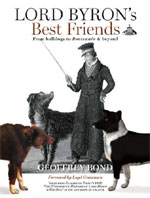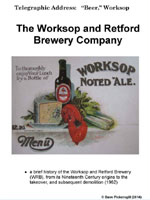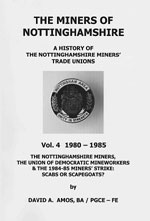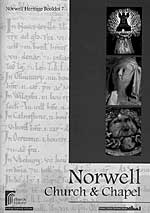Book reviews, Winter 2013

Geoffrey Bond, Lord Byron’s Best Friends: from Bulldogs to Boatswain & beyond, with a foreword by Loyd Grossman. (2013), £25.00, ISBN 9780951689110
This is the quintessential coffee table book. There is a running account of Byron’s life, but this tells us nothing we did not know. It is the pictures, mostly in full colour and beautifully reproduced, which really make the book stand out, some of them from private collections not normally seen by the public.
If you are a dog lover (which the author is not) you will particularly enjoy the main part of the book (p.44 onwards) in which Geoffrey Bond looks at the various dogs associated with Byron through his lifetime, notably Boatswain, Lyon, various bulldogs and mastiffs, and ‘Dogs Miscellaneous’. Bond argues that Byron found betrayal and mistrust among the people around him, and loyalty and affection from his dogs, hence his desire (unfulfilled) to be buried at Newstead beside Boatswain.
Overall, an excellent present for dog lovers, and particularly those who also happen to be interested in Byron and Newstead Abbey.
John Beckett

The Worksop and Retford Brewery Company. Dave Pickersgill, (2014), a Kindle book. £1.75 from Amazon – search using ‘Beer Worksop’.
This is the first time that a book only available in electronic format has been reviewed in the Thoroton Newsletter. There is no denying the tactile pleasure of holding a printed book (or journal) or of seeing a well stocked bookcase in a house and long may these pleasures last. However, the modern era is upon us and the every day use of electronic equipment is now part of our way of life. My wife owns a Kindle and I an iPad which we use for reading when travelling (saves weight in these days of restricted weight for luggage by airlines) and also at home. The sophistication of this equipment is staggering and the number of books etc. which can be kept on them is amazing. There are some drawbacks – I wouldn’t want to use one in the bath, for example, but in general the advantages far outweigh the disadvantages.
The ability to produce a book solely for Kindle means that publication can be made of work which otherwise would likely not be produced due to the costs involved for an unsupported author and this must be true for many local historians. There is an added feature in that the costs of colour printing are still quite high whereas in electronic form full colour can be used without additional expense. We will very likely see more and more use of this facility, something which we will have to become accustomed to since ignoring it will close the door on much local history work.
In the current example we have a 41 page booklet which carries many illustrations, where relevant in colour and there is no doubt that the use of colour increases the pleasure and understanding of the content. In this case, we would not have the same appreciation of the labelling and advertising techniques of the brewery were the images solely reproduced in monochrome.
Dave Pickersgill started research into the story of the Worksop and Retford Brewery Company to assist a couple of his friends who were writing a novel Beer, Balls and the Belgian Mafia, which will be published shortly. Over four years Dave visited depositories and museums in the region and amassed a lot of information. It is to our benefit that he has now turned those research notes into this fascinating history of a Brewery which many people in Nottinghamshire, Leicestershire, Lincolnshire and Derbyshire, along with South Yorkshire, will remember, if not from the actual product, but by recognizing labels, signs and stone carved logos on buildings which were once pubs and now have other uses.
Worksop and Retford Brewery was formed in September 1881 by the merger of Smith & Nephew’s Cresswell Holme Brewery and the Priorwell Brewery Company. Cresswell was the owner of the Old Brewery in Retford. The new company adopted the symbol ( we would now call it a logo) of an Iron Cross on oak leaves; the Iron Cross was a symbol depicting health and, of course, is familiar across Europe. This logo can still be seen carved into the stone façade of several buildings and is illustrated in this book.
The amalgamated brewery was well sited in Worksop because the town had numerous malting kilns and in 1890 malting was described as the principal trade of the town. In 1831 there were 40 maltsters in the town, 29 in 1860 and in 1875 Thomas Berry of Sheffield opened a gas-fired malt kiln on Sherwood Street and in 1880 the well-known name of William Stone, also of Sheffield, opened a large malt kiln on Gateford Road in the town.
The W&R Brewery published annual almanacs for several years ( some can be seen in the Bassetlaw Museum) and there were occasional advertising ditties such as:-
From North unto South and from East to West
Wherever you go it is always the best:
Where’er you may taste it, its ne’er known to fail
Then give me a tankard of Worksop’s rare Ale!
In 1939 W&R took over the Old Albion Brewery of Sheffield but they were themselves taken over by Tennants in 1959 which company in turn was absorbed into the Whitbread empire in 1962.
W&R was eventually wound up in April 1970 and their Priorswell Brewery complex demolished in 1962.
This is a story typical of many independent and regional breweries yet all these companies had elements of individuality and W&R was no exception especially in its creativity in marketing its products. The book carries a useful bibliography and is fully referenced. It is an excellent addition to the history of business in Worksop but will appeal to a wider audience who study pubs and brewing in their local area as well as a more general study of brewing in England. The book is highly recommended if you have the facility to download and read Kindle books.
Howard Fisher

The miners of Nottinghamshire - A history of the Nottinghamshire Miners’ Trade Unions, Vol. 4 1980-1985. David A. Amos, published by the Union of Democratic Miners, Mansfield, 2013. £13.99 all proceeds to local charities. ISBN 978-0-9570631-3-6.
This is a substantial A4 book of 283 pages plus an un-numbered index. It is fully referenced with a useful bibliography, 22 appendices and some illustrations. It is volume 4 in the series on the History of the Nottinghamshire Miners’ Trade Unions and deals primarily with the 1984-85 Miners’ strike as it affected the Nottinghamshire coalfield and the consequential formation of the Union of Democratic Mineworkers (UDM). The book is perfect bound, the choice of font and its point size makes for a rather heavy appearance which doesn’t make for a particularly comfortable reading experience; the font size could have been reduced which would have made for a rather more elegant appearance and easier reading. I accept that this is a personal observation and one about which I have a bee in my bonnet but which arises from the wish to have a pleasurable visual as well as intellectual experience in reading a book!
The author is very well placed to write such a history having worked as a miner from 1974 to 1998 at Annesley colliery including eight years as a coal-face electrician. He became a Branch Official for the UDM at Annesley and occupied the positions of Branch Secretary and Branch President during his period in office. He can, therefore, provide an insider’s view of the background to the strike, the course of the strike and the subsequent effects it had within the industry, the county and on the National Union of Mineworkers (NUM). Dr. Amos left the coal industry at the end of 1998, obtained a BA in 2002 and PhD in 2012. The UDM has published the book and also gave support to David Amos during his studies.
The book text carries several references to ‘this study, and ‘this thesis’ which suggests that it is based on the author’s MA and PhD dissertation and thesis respectively. Indeed, the book reads very much like an academic project and is fully referenced throughout. As a consequence it is a book which represents a valuable addition to coalfield studies but which will prove heavy work for a reader who is not accustomed to academic reading and writing. I feel the text could have been tightened-up and re-worked to make for an easier read without losing the importance of the work. On the other hand, as volume 4 in a series of histories it is a serious study which probably is the reason it is presented in this way. This reviewer is not familiar with the previous three volumes in this series and whilst the Bibliography mentions Volumes 1 and 2 (Alan R. Griffin 1955 and 1962) there is no apparent mention of volume 3.
When this reviewer came to live and work in the East Midlands from his Yorkshire home in the early 1960s Nottinghamshire had many collieries although the 1960s saw the closure of some of them. My work involved the occasional visit to pits and during the 1984-85 strike the effects of picketing were observed as various collieries were driven past. During the strike I had direct experience of interaction with picketing, both from police intervention (being stopped by policemen from the Met. on the A610 exit from the M1 in the early hours of one morning and being closely questioned for several minutes about where I had come from (London) and where I was going (home) and needing to produce documents to establish identity) and from the need to visit collieries during the strike. I recall clearly interchanges at Hem Heath (Staffordshire) and at a couple of Nottinghamshire pits when I needed to pass through picket lines to keep appointments with particular individuals. Having stopped and got out of the car to explain in detail why I was there I was met with courtesy and good humour. This was not the experience of working miners as is made quite clear in this book. In addition I also had to visit the homes of miners, both striking and working, in Nottinghamshire and South Yorkshire, so was able to understand a little of what both sides were going through during this period.
David Amos considers the background to the strike and the effect the strikes of the 1960s and 70s had on the Nottinghamshire miners, the rise of the left in the NUM, particularly after the retirement of Joe Gormley, and the causes of the decision of the majority of the Nottinghamshire miners to continue working throughout the 1984-85 strike. The lack of a national ballot, the attempts to create a complete strike through the Rule 41 ‘Domino Effect’ and the attitude of Yorkshire flying pickets in the early days of the strike before the Nottinghamshire ballot was held, all had a serious effect. It must also be remembered that although the Nottinghamshire coalfield mostly worked throughout the strike it did maintain the overtime ban which had been in existence prior to the start of the strike.
As I finished reading the book and started to write this review it coincided with a report in The Times of 29 January that the Labour Party was demanding an apology from the Conservatives for the way that Margaret Thatcher had treated the miners during her time in office. This arose as a result of the release of Cabinet papers indicating that the Thatcher government had secretly planned the closure of 75 collieries nationally (including some in Nottinghamshire) with the loss of 65,000 jobs as opposed to the 20 which were publicly stated at the time.
This work by Dr. Amos is a most important addition to the recent history of Nottinghamshire. In particular, the county’s coal industry, evidence of which has been almost eradicated from the landscape which, to me, is a great shame because the industry played such an important part in the county from the days of the licensing by Beauvale Priory of bell-pits at Robinetts, Cossall and which led to the building of important houses (Wollaton Hall) from the proceeds of coal mining, the establishment of railways through to the loss of the mines within living memory.
The book is highly recommended to anyone wishing to understand more about the period it covers and also to the casual reader interested in the mining industry and of Nottinghamshire in general.
Howard Fisher

Norwell Church and Chapel: Norwell Parish Heritage Group, 2014. ISSN 2040-2406. £4 from the Norwell Parish Heritage Group.
This is a well bound A5 publication with soft covers and 54 pages with numerous illustrations and is a very informative book on several levels.
In the Introduction the authors state that the booklet aims to:
interpret the architecture and recount the history of the parish church and of the two former Methodist Chapels in Norwell.
Norwell is a small rural community to the north of Newark and has a population of around 450 which is about the same as it was in the years 1250 and 1700.
The book is described as containing two parts: the first contains information on the church buildings and is presented in such a way as to be of use to both the church historian as well as the occasional visitor to the church.
The details contained in this booklet describe well the development of the building from its early years to the present. It has to be said, however, that in the opinion of the reviewer, there are too many assumptions not supported by any evidence. Having experience in the research into local churches in line with the Southwell Diocese Church History project, too much unsupported speculation can mislead those referring to such information and paint a less than true picture. It is appreciated that gathering evidence is usually quite a difficult exercise and some assumptions are, unfortunately unavoidable, but in this instance there are too many of these to be entirely comfortable.That said, the information has been well researched.
The many images included in the booklet are of excellent quality and the majority are relevant to the script.
The second part of the book explores the growth (and decline) of religious life in the village and many of the people who were involved. Religious practices through the ages are considered and provide an interesting aspect to the village and, in particular, the interaction of the church with Southwell Minster.
Of significant interest is the picture that emerges when considering church attendance through the years and the changes forced on the Christian community which could be said to reflect the wider experiences of the church throughout the country.
The picture painted of the progress of Non-conformism is very well described. It portrays a community drawn together by a religious faith very different from that of their predecessors and, for people of a certain age, brings back happy memories of days spent within the Methodist movement. The illustrations of the village and its people at that time clearly show the community spirit encouraged by both Non-conformist and the Anglican traditions. The authors also describe only too plainly the demise of the religious life of the village, citing the abysmally low attendances of the recent past.
In the Conclusion the authors describe a broader guide to aid those visiting the church, be they parishioners or casual visitors especially when using the glossary provided.
It is clear that the stated aims of the authors have been achieved admirably and congratulations are due to the compilers of this splendid and informative booklet.
Alan Butler